Aston Martin has revived the Vanquish name for a new flagship sports car that will boast 824bhp from a twin-turbo V12, making it the firm’s most powerful pure-combustion engined model yet.
Originally planned to use a plug-in hybrid set-up based around a smaller V8, the British car maker’s £300,000 two-seat GT, which is due in October, instead keeps the engine layout that has long powered Aston Martin flagships. This started with the 1998 Project Vantage – the prototype of the first-generation Vanquish, which was launched in 2001.
The move to a V12 was requested by Lawrence Stroll, with the Vanquish being the first all-new Aston to be developed entirely during his time as company chairman.
The 5.2-litre engine “defines the car”, according to chief engineer Simon Newton, with its lofty power reserves augmented by an “experience dominating” 738lb ft to give a 3.2sec 0-62mph time and a top speed of 214 mph. That’s faster than any road-going Aston bar the 250mph Valkyrie hypercar and broadly in line with the capabilities of the 6.2-litre engine in the nose of its closest rival, the recently revealed Ferrari 12Cilindri.
The Vanquish’s V12 engine is an evolution of the unit that powered its DBS predecessor, although Newton said every element of its architecture “has been revisited”.
He added: “This is the perfect interpretation of a V12 sports car, celebrating that engine.”
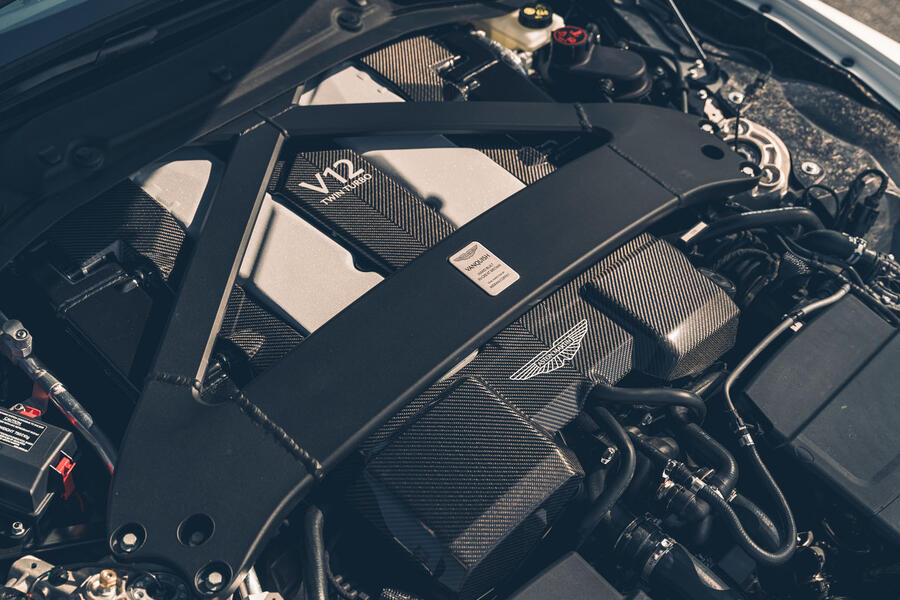
Headline mechanical changes amount to a new, stronger block to cope with the extra output, larger turbochargers that spin 15% faster and at up to 15% higher compression, new camshafts, new cylinder heads and new intake runners. “Bar the cranks, pretty much everything is new,” Newton said.
He also confirmed the torque management system has been “taken to the next level” compared with the outgoing DBS 770 Ultimate flagship GT, with the revised set-up now offering better everyday usability.
A new Boost Reserve function has also been added; this increases the engine’s responsiveness at lower revs by upping turbo boost pressures for short periods. Power is sent to the rear wheels through an eight-speed ZF transmission.
This engine is a key point of differentiation from the DB12 and the Vantage – both of which have been updated within the past year.
Aston product boss Alex Long said this was so the three cars “didn’t sit on top of each other” as they had in previous generations.
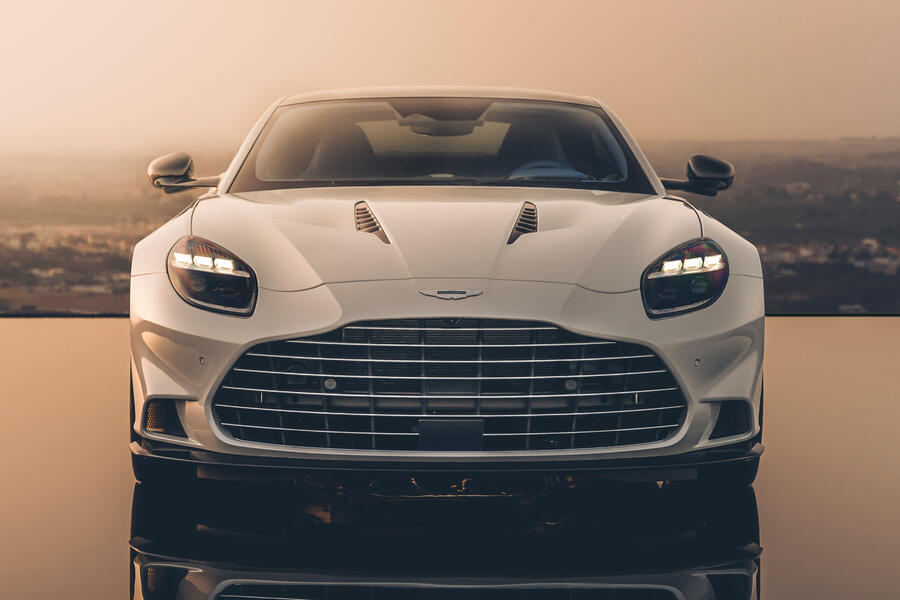
Long said the team “pushed hard” to get the V12 into the car. Boss Stroll ultimately demanded it be fitted after determining that the business case stacked up.
Long added: “To reinvest in the V12 is a bit of an eyebrow raiser, but we believe there’s life and demand left. It has gone from being ‘just that other engine option’ to something that is truly heralded.”
A similar stance was taken by Ferrari for its new flagship 12Cilindri. The Italian firm’s chief product development officer, Gianmaria Fulgenzi, told Autocar “it was a brave decision” to invest in the 12-cylinder motor, but “not too difficult, because we love the V12; we know our customers love the V12”.
Aston Martin’s engine has been future-proofed, said Long, so it will conform with emission regulations up to 2030, “and then we hope to continue beyond that”, he said, with a roadmap in place to take it into the next decade.
Increasingly stringent emissions regulations mean Aston Martin’s largest engine can “only really live now in the modern era, where it’s in very special cars”, said Long. Just 1000 Vanquish cars will be built per year, and they will initially be sold on an invitation-only basis.
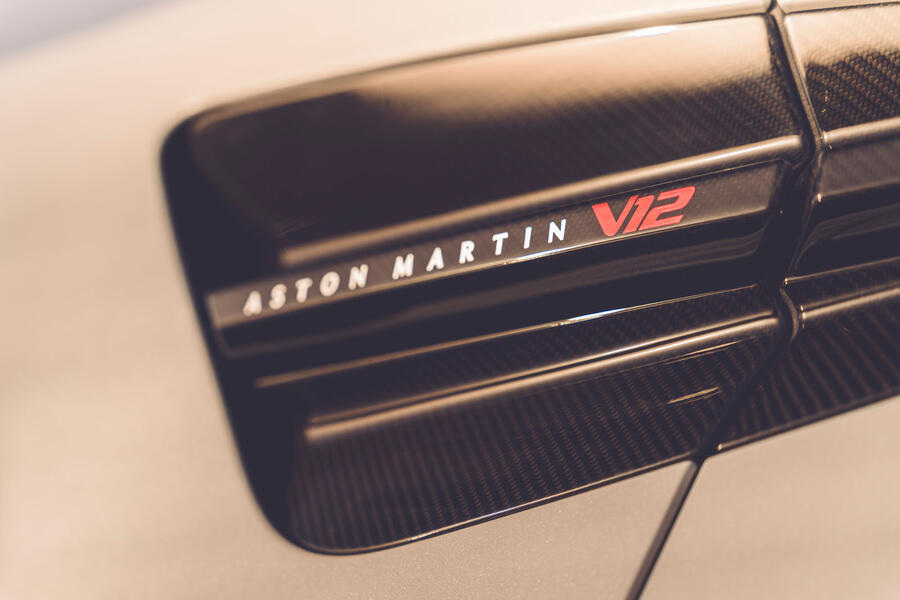
Long added that without this V12, Aston would not have revived the Vanquish name. “We didn’t call the DBS ‘Vanquish’ because it wasn’t a Vanquish,” he said. “It wasn’t a dedicated car like the [original] car, which was on its own platform and had its own engine and tuning.
“This time that’s what we wanted to do. We set out to say ‘let’s build a Vanquish’, and everything flowed from there. It needed to have its own footprint, its own drivetrain, its own look, its own interior and so on.” He added: “It is a really powerful name that needs no explanation; it has got a conquest job to do for us as we grow.”
Beyond the engine, the Vanquish’s platform – which also underpins the DB12 and Vantage – has been tweaked to both accommodate the larger engine and give the Vanquish a longer wheelbase. At 4850mm in length, it is 125mm longer than the DB12, and at 1774 kg it weighs 89kg more.
Compared with the DBS, the front wheels have been pushed 18mm further forward, while the rear track is 10mm wider, enabling a “stalking” pose, according to Aston Martin design boss Miles Nurnberger.
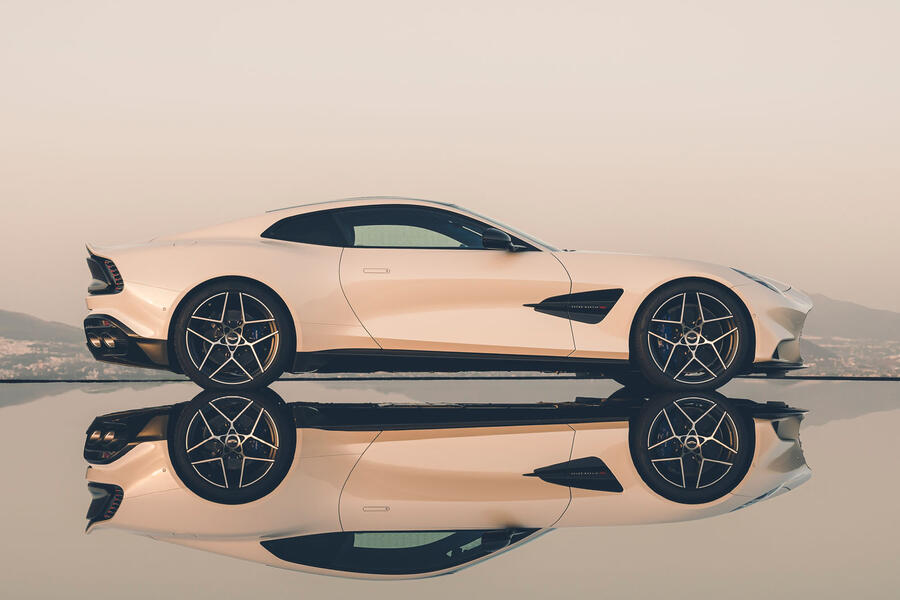
“Clever” frameless mirrors mean that despite the extra rear width, at 2044mm the Vanquish is no wider than the DBS.
The chassis is made with bonded aluminium and carbonfibre and has been reinforced with larger anti-roll bars, making it 75% stiffer laterally to give cleaner, crisper handling and better steering feel.
This stiffened base also means the car can “get away” with more damping, Newton said, which is important for its GT credentials.
A key addition is a new electronic differential that boosts stability at high speeds. A new ABS system provides “significantly improved” braking distances and maximises available grip at corners – especially, Aston Martin says, when trail braking – to enable tighter lines.
Stopping power comes in the form of carbon-ceramic discs – 410mm at the front and 360mm at the rear.
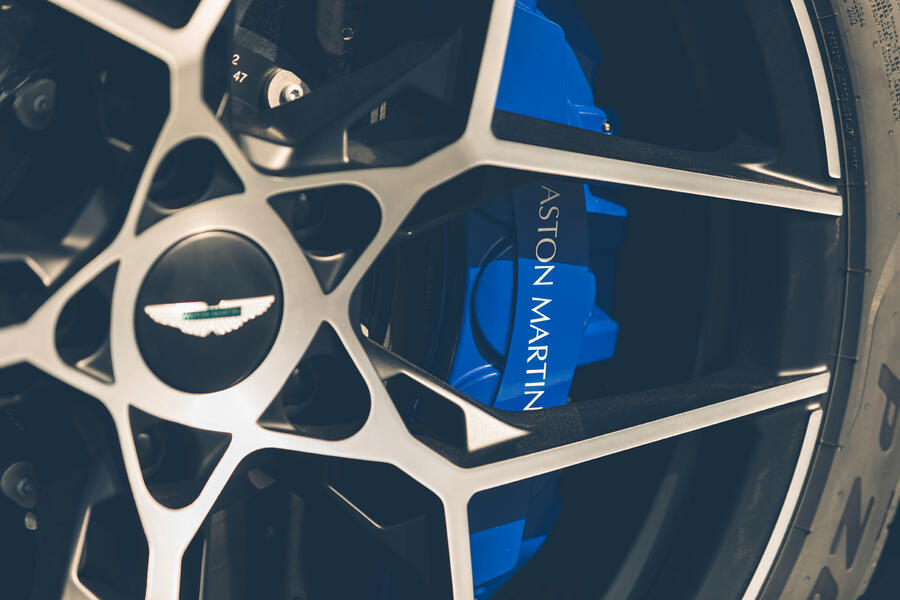
Like the rest of the Aston Martin model range, the interior is a world away from the ageing, analogue feel of the previous generation. It features a 10.25in infotainment touchscreen and an identically sized digital display that runs Aston Martin’s new software stack.
The dashboard is distinguished from the DB12 and Vantage by a unique centre console design. Physical buttons remain for functions such as audio and climate control, as well as to activate the gearbox’s manual mode.
Nurnberger said this was so that everyday functions “weren’t hidden behind three menus” and could be accessed “as quickly as possible”.
The Vanquish is also fitted with a full-length panoramic glass roof and the cabin is finished with Alcantara and the seats feature a new quilted design.
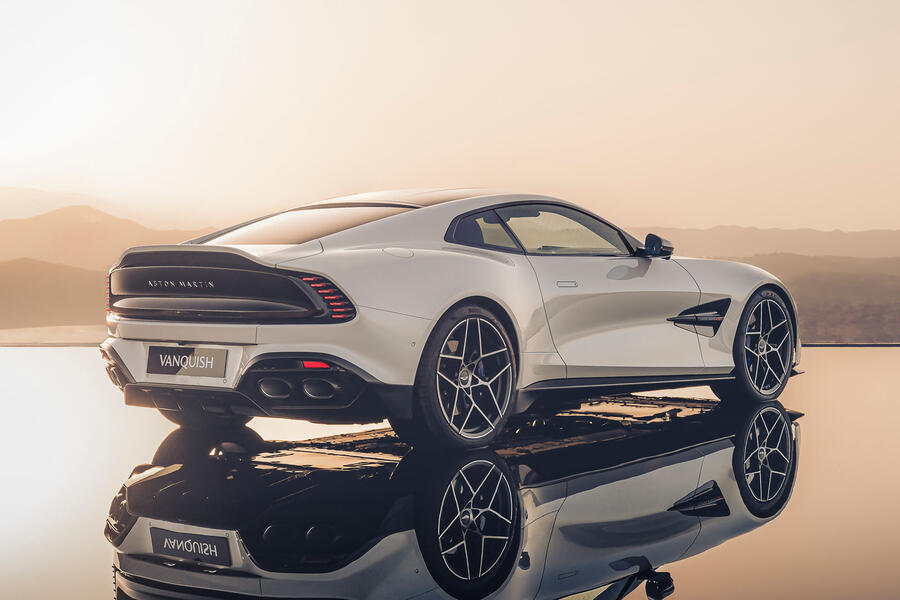
At the front, the classic Aston look has cues taken from the One-77, including a huge grille and angular nose, but it’s the ‘shield’ motif at the rear that most obviously marks the Vanquish out from Aston’s current and past sports cars.
This was a last-minute addition to the Vanquish that “caused a bit of a storm”, Nurnberger said, given that it needed Stroll’s direct sign-off. The feature can be specified in matching body colour or contrasting carbonfibre.
LED light blades each side are inspired by those on the Valkyrie hypercar, and a gurney lip hints at the Vanquish’s performance potential.

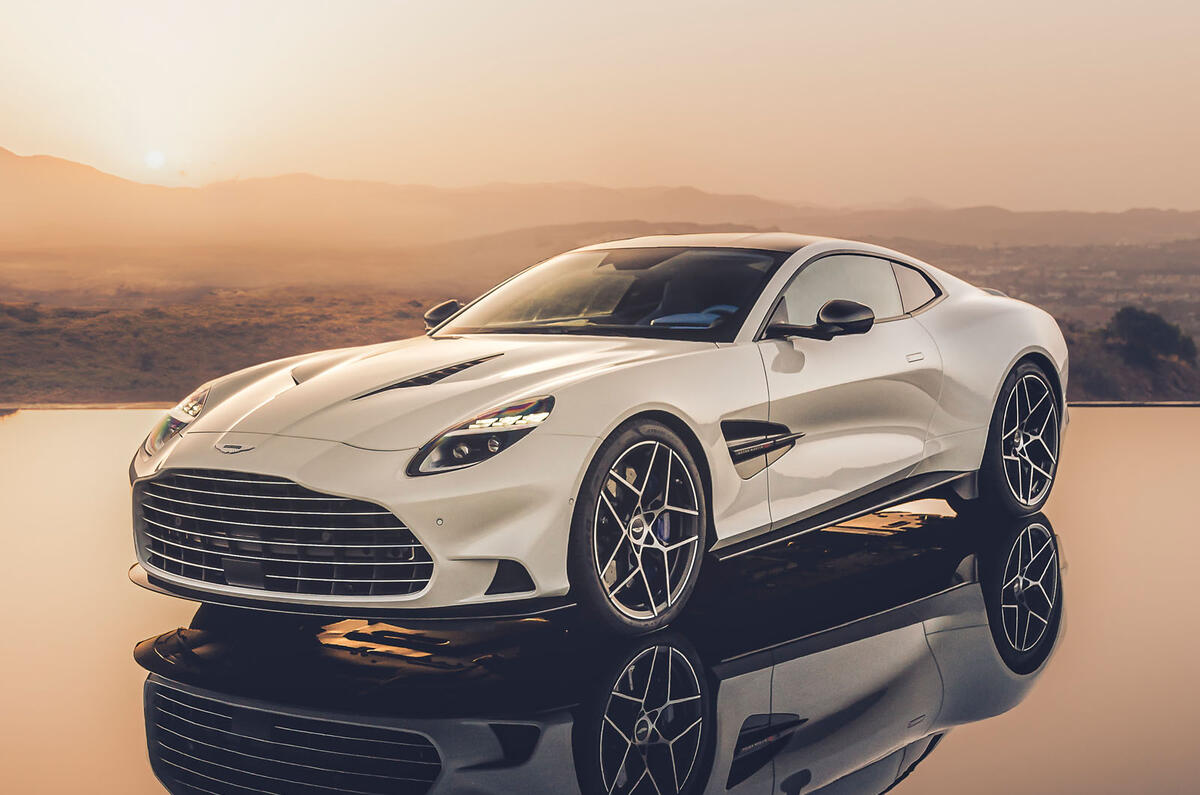
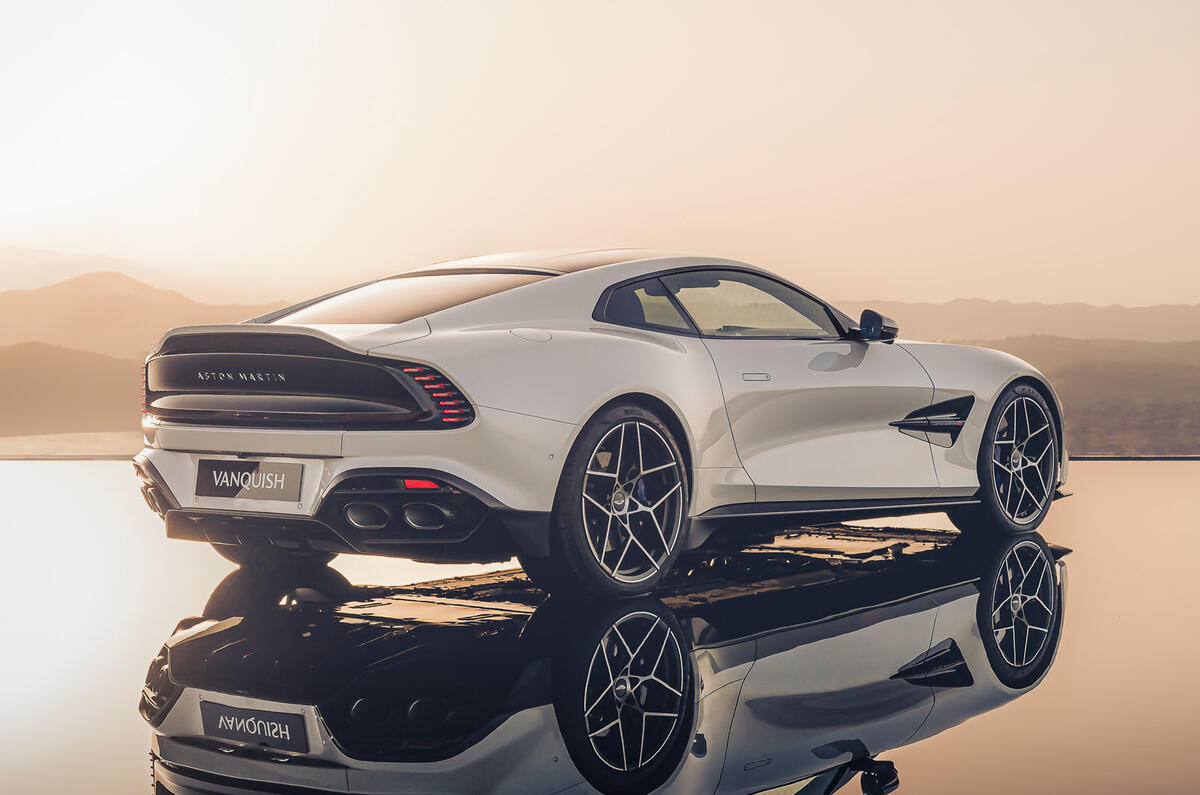

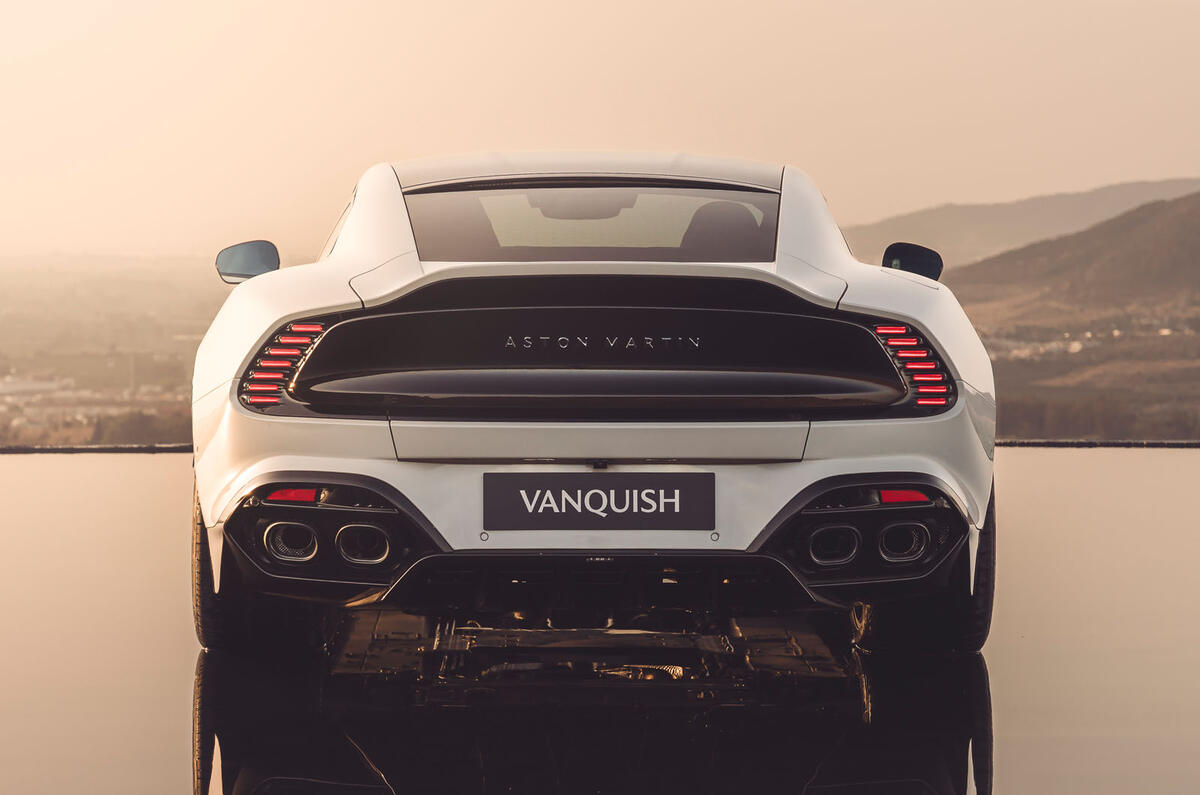
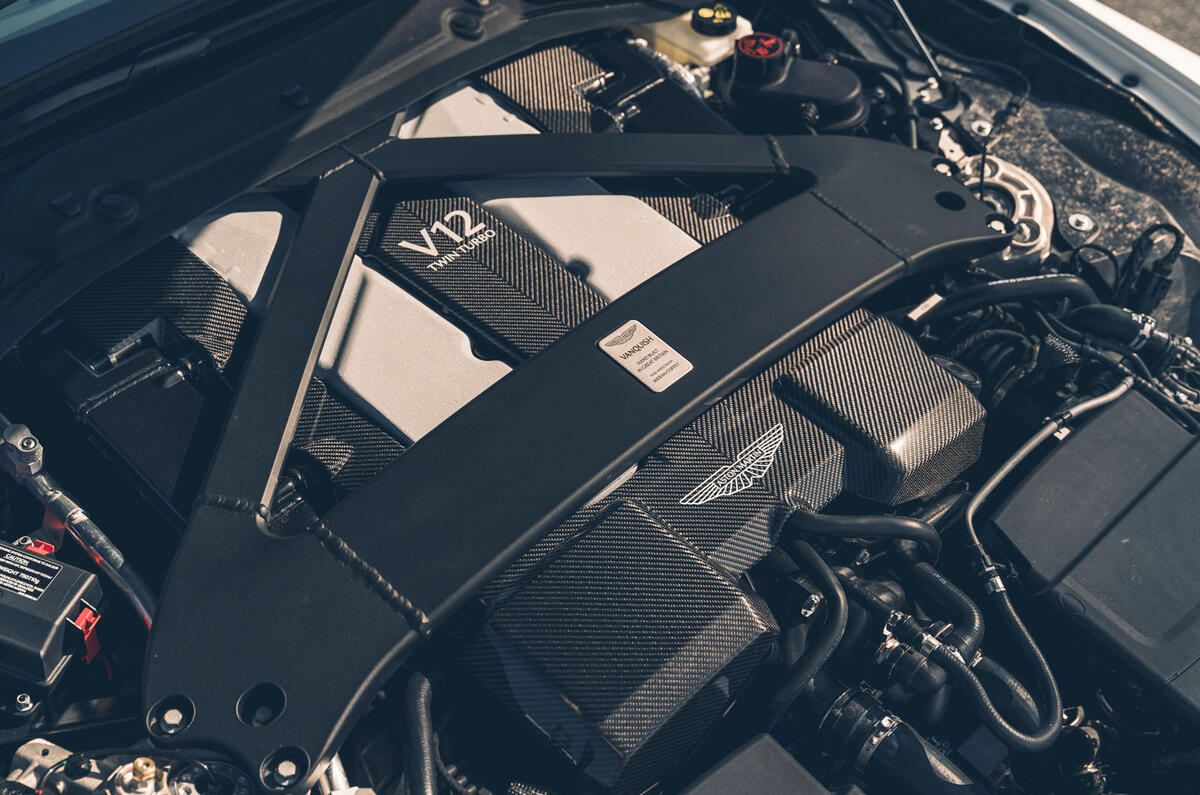

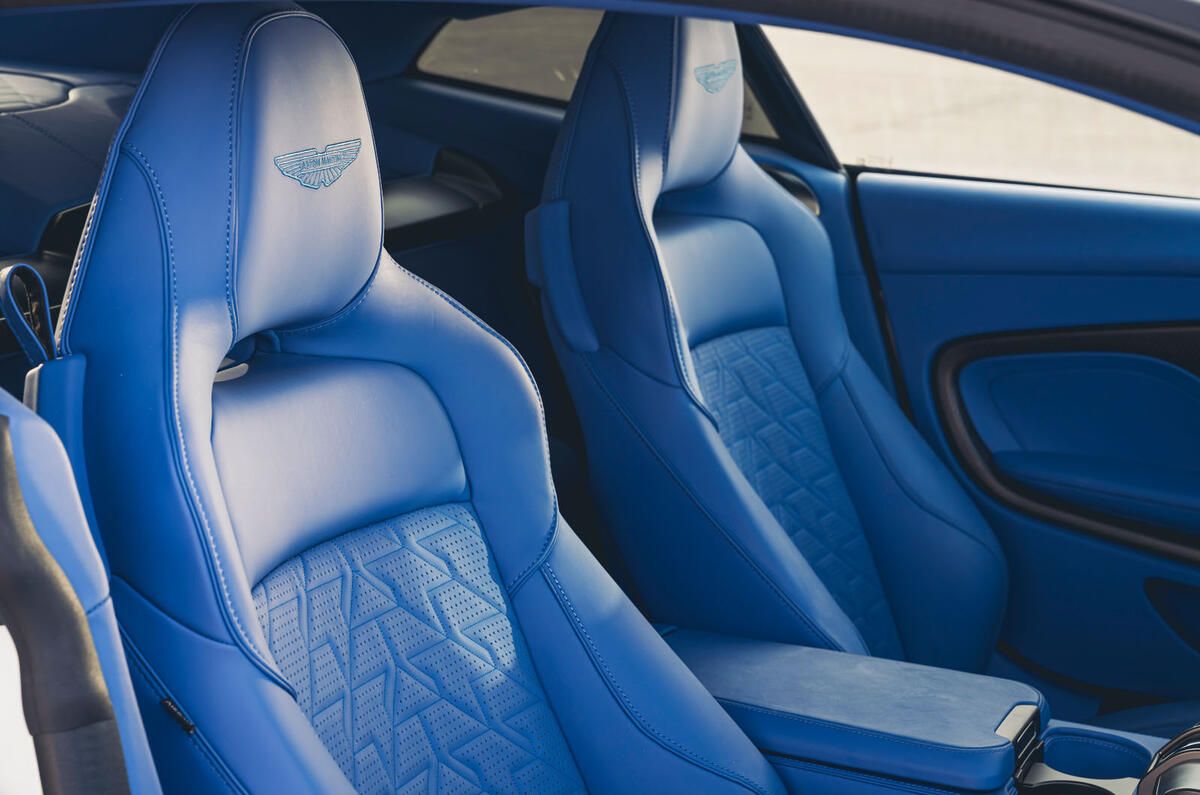













Join the debate
Add your comment
Wow, 824bhp V12! This new Vanquish sounds absolutely incredible. Driving something that powerful must be an intense experience. I bet you'd need some seriously sharp human benchmark to handle all that power on the road safely and effectively. What a machine!
Just 1000 per year? Thats an ambitious target for a £300k car.
Assuming they build that number, what's going to happen to them when they get old and need expensive maintenance - or maybe most will get written off avoiding the issue.
Who actually needs a 200mph 2-seater burning fuel like there's no tomorrow anyway?
Come on Autocar, it's a poorly kept secret that the 2035 ICE ban is being walked back. There will be a version of this V12 avaiable at your local Aston dealer well past 2035!
good
hope the ICe ban is put back furtehr and further...